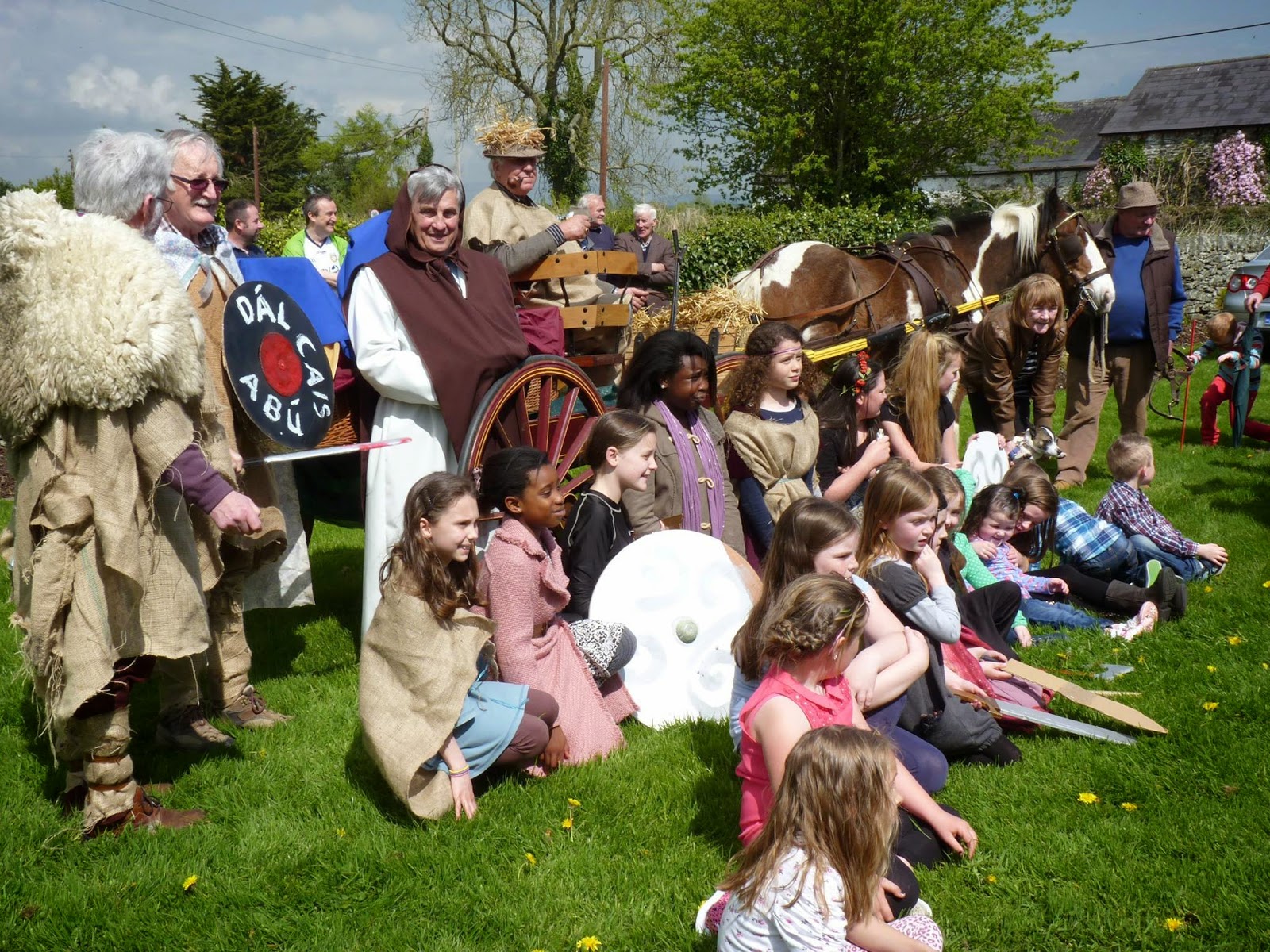Battle of Clontarf 2: Vikings take another beating
 |
Over the two day battle re-enactment event over 60,000 came to watch the
500 reenactors at St. Anne's Park.
|
They
came, they saw, they eventually established Dublin, Waterford,
Wexford, Limerick and Cork – and now the Vikings are back in North
Dublin to re-enact the Battle of Clontarf a thousand years later in a
re-match.
Over 60,000 people attended the Easter weekend's first re-enactment of
the battle between the Vikings and Irishmen,
that featured 500 actor soldiers dressed in Viking and Irish period
clothing.
 |
| Viking waits for the signal to attack. |
The
largest re-enactments ever staged in Ireland were held in St Anne’s
Park close to the original battle site. The next big re-enactment event
will be the Battle of Hasting, but its millennial event isn't until
2066.
The
two-day Battle of Clontarf Festival included a medieval village with
over 80 tents, skills and weapons demonstrations, a mounted display
on horses, a Viking longboat, falconry, archery, food, music and
events for the children.
Tania
Stewart attended the events with her sons, she said, “I think it’s
absolutely brilliant, I was dying to come here because I’m
half-Swedish and half-Irish – so I love the whole Celts and Vikings
thing.” She was enthralled by the festival.
Another
spectator was Joe O’Neill and his children loved the festival,
“They are having a ball- they are all just pirates to Jack,
they are not Vikings at all,” Joe laughed. “It is a stunning
event. I’m from Clontarf, but I haven’t been down this way in a
long time, it’s great.”
 |
| Irishmen march under King Brian's banner. |
Re-enactor
Russ Scott has taken part in historical battle re-enactments for 27
years across the globe. He said, “I did research on the Battle of
Clontarf to put as much into the battle as we could and, with the 500
warriors we have on hand this weekend, we can bring in more realistic
elements. Every group is here by invitation and we train to look good
and fight well, but we don’t hurt people, although accidents do
happen, but not very bad ones!”
Donabate
Community College history teacher Bryan Kelly and his brother,
Cormac, took on a for-midable Viking with their hurls. Luckily
though, it was only for a photo opportunity.
"The
battle was so good and the MC-ing especially was great," said
Bryan. "Everyone seems to have a real in-depth knowledge of
this history of the battle and they explained things well."
The
event was a success, said arts officer Ray Yates. "It's
been an event where people can relax with their family and where
there is lots to do for free, and I think that families really
appreciated that," he said.
The
Battle of Clontarf took place on 23 April 1014, between the High-King
of Ireland Brian Boru and an alliance of the king of Leinster, the
king of Dublin and a Viking contingent from the Isle of Man, Orkney
Islands and the isles of western Scotland. The battle is believed to
have lasted all day, resulting in the deaths of almost all of the
important figures on both sides. The Irish lost around 4,000
warriors, and the Viking side some 6,000. Brian Boru was killed, not
in the bloody battle, but by the Manx Viking
Leader, Brodir, who stumbled across his tent and slew Boru who
had gone to his tent to pray and give thanks to God.
Also
the Battle of Clontarf was a family affair. Máel
Sechnaill II of the Uí Néill, was the High-King who abdicated
his crown to the king of Munster, Brian Boru in 1002. Máel was also the
second husband of Gormflaith, sister of Máel na bo, king of Leinster,
but he divorced her. Gormflaith then married Brian Boru, a political
marriage to the mother of Sitric “Silkenbeard” Olafsson, king of
Dublin, who was Brian's son-in-law having married Brian's daughter
Slani. This marriage was hopefully an alliance with Dublin and
Leinster. Brian and Gormflaith had a son Donncad (his parentage is
debated, possibly the son of Brian's third wife). Gormflaith is also
considered the instigator of the Leinster and Dublin kingdoms revolt.
 |
| The battle begins. |
The
main Irish source of the Battle of Clontarf is the Cogadh
Gaedhil re Gallaibh,
which was written in the late 12th century and is thought to be a
clever piece of O’Brien propaganda, which is okay if one is an O'Brien, but to others it is a tainted historical account. The Battle of Clontarf also
features in the dramatic Icelandic text from the 13th century known
as Njals Saga or The Story of Burnt Njal.
SOURCE IrishCentral.com & Herald.ie. Photos from these sources and Thyes Kavanagh
 |
| Women could be found among the warriors on both sides. |
 |
| Victory for the Irish. |























